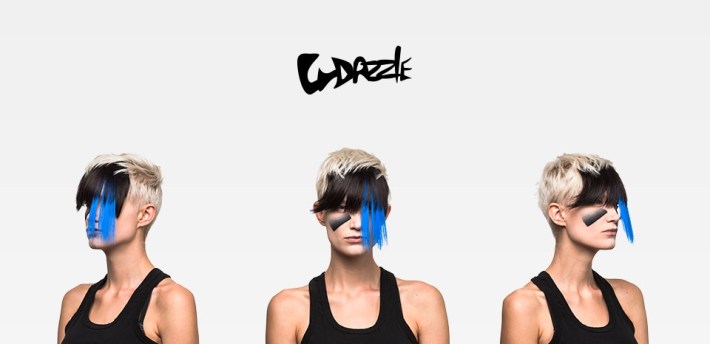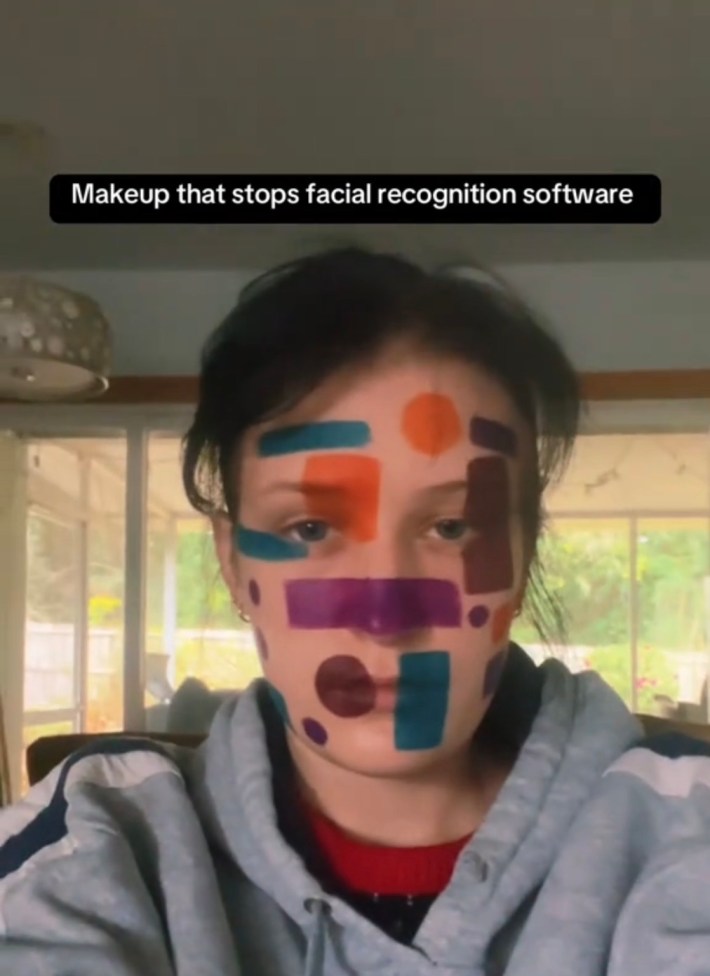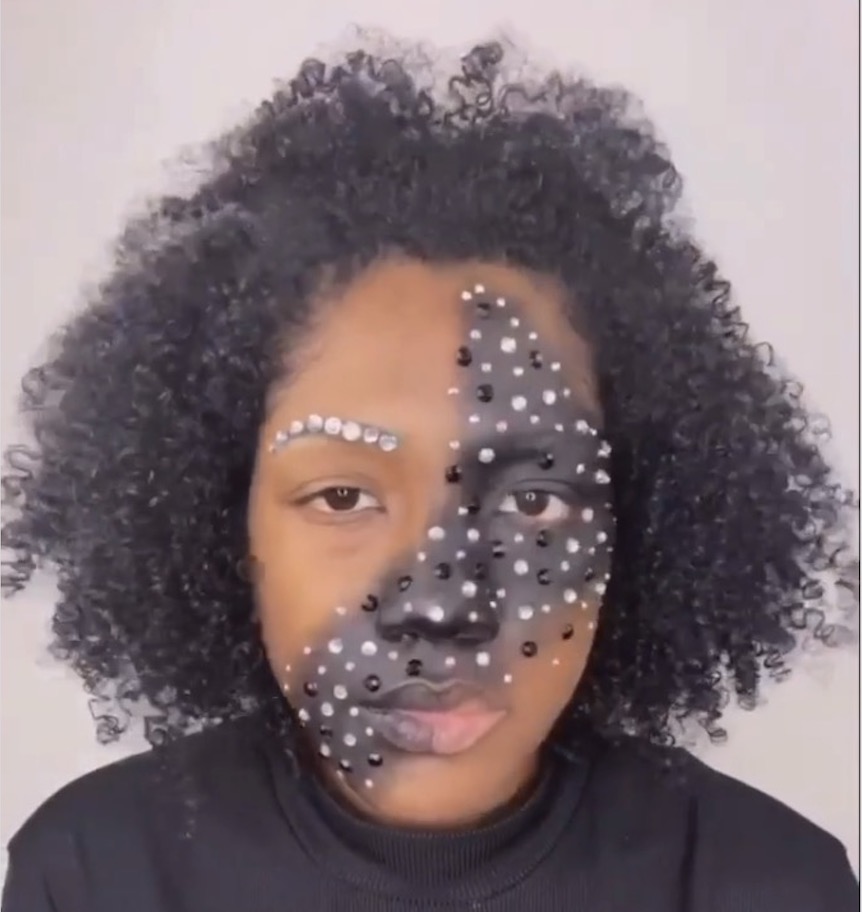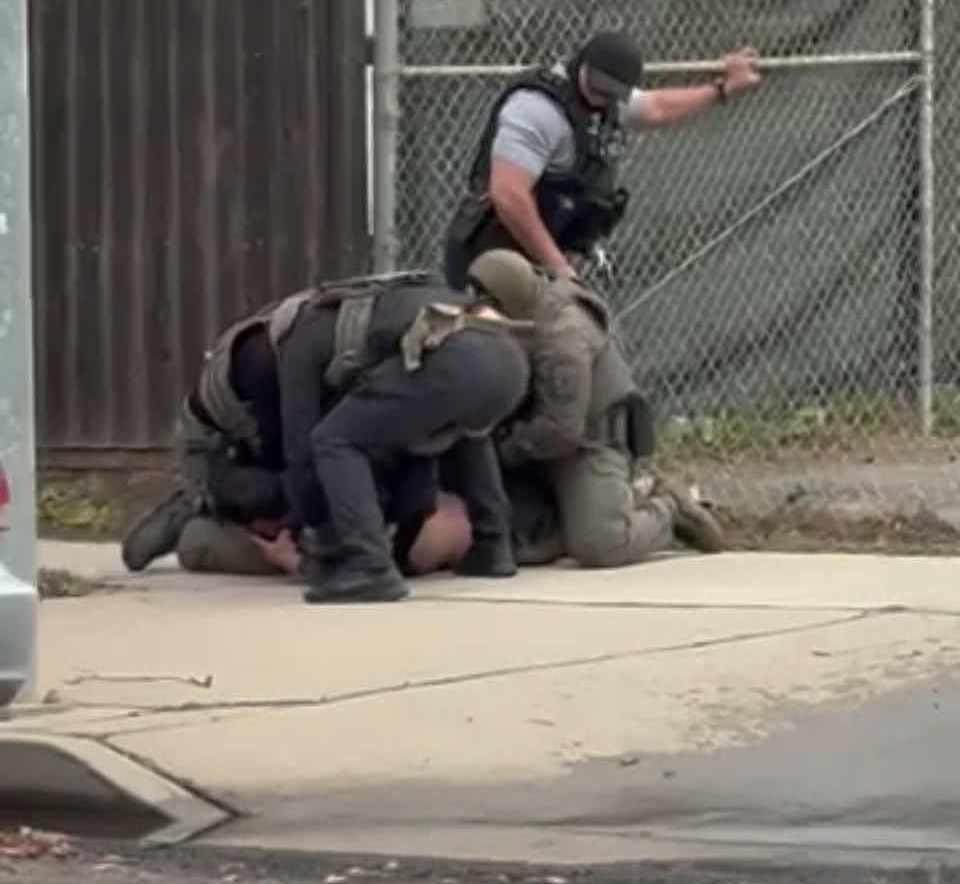Makeup has long been used as an art form to make political statements, but can it also be used to thwart police surveillance technology?
In light of the ongoing protests against ICE raids, social media users across YouTube, TikTok, and Twitter have been sharing makeup tutorials designed with the intention of camouflaging protesters against facial recognition technology.
Known as Computer Vision Dazzle, or CV Dazzle, this abstract style of makeup was created by artist and researcher Adam Harvey for his 2010 master's thesis at NYU. While traditional camo is designed as a disruptive pattern meant to hide the wearer from the human eye, CV Dazzle was created to break machine vision systems. The name comes from “Dazzle,” a type of camouflage on battleships in WWI and WWII that used complex patterns of contrasting geometric shapes to make it difficult for enemies to determine their speed and distance. (It is worth noting that Dazzle camouflage offered mixed results at best.)


Since its invention, CV Dazzle has been utilized in various protest movements. During the 2020 George Floyd protests, a popular hashtag was shared on social media to foil facial recognition software used by law enforcement. The London-based collective known as The Dazzle Club also utilized anti-surveillance makeup between 2019 and 2021 to protest the city’s widespread use of surveillance cameras.
But does anti-surveillance makeup work?
Unfortunately, the answer is: Probably not.
The original makeup designs created by Harvey were tested on facial recognition software that is now heavily dated and no longer in use. Modern-day surveillance technology used by law enforcement is significantly more sophisticated than it was 15 years ago. It can detect other identifying factors, such as a protester’s clothing, tattoos, and even their gait. Even though Harvey updated some of his makeup designs in 2020 to keep up with what was the current surveillance technology at the time, it would be difficult for your average protester to continually update and test the efficacy of their makeup as facial recognition continues to improve.
Applying anti-surveillance makeup is also complicated, time-consuming, expensive, and has the unintended effect of making protesters more visible to the human eye, as well as security cameras. The loud, often colorful designs set their wearers apart in a crowd of protesters, which might make them a target for police. This is compounded by the fact that law enforcement has been regularly employing “less lethal” methods of crowd control during anti-ICE protests, such as tear gas and pepper spray.
Due to the composition of these chemical irritants, which are oil-soluble, they cling to various types of makeup, making them more challenging to remove. For this reason, oil-based makeup is not recommended to be worn at protests where tear gas and pepper spray might be employed. (And, let’s be real, based on law enforcement’s overactive response to peaceful protesters fighting for immigrant rights, this can always be a risk.)
What can protesters do to help protect themselves from mass surveillance? The ACLU recommends that protesters wear face coverings, such as masks, bandanas, and/or sunglasses, to make it more difficult for police to identify them with facial recognition software. For privacy purposes, they also recommend fully encrypting your phone's data, disabling face and fingerprint recognition, and scrubbing metadata from your photos that might reveal your location.
So, don’t forget to wear a mask during your next protest because the feds are already doing the same.







